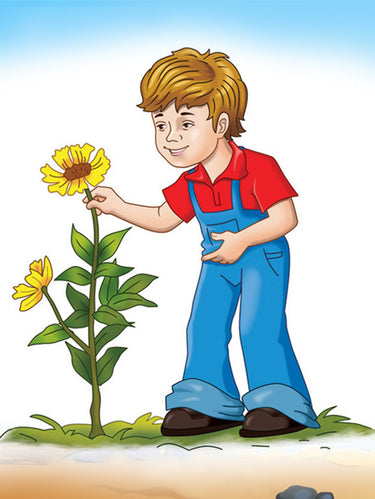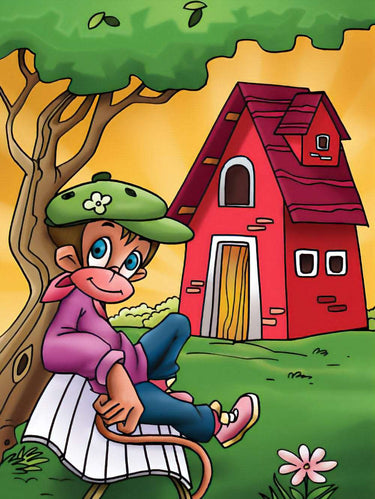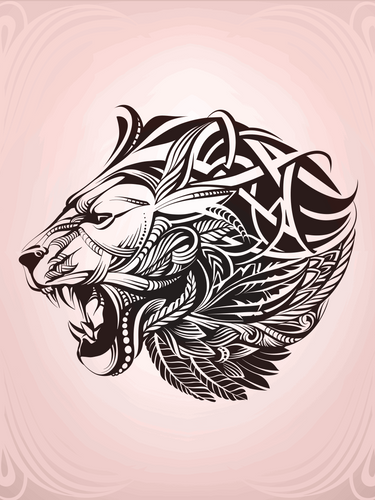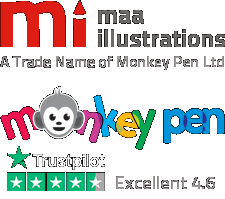For ages, the study of medical illustration has been essential to our understanding of human anatomy, illness processes, and treatment methods. It has consistently changed and grown throughout its history in response to advancements in technology, modifications in medical procedure, and evolving demands of society. The remarkable history of medical illustration is examined in this essay, from its early beginnings to the digital era, emphasizing key techniques and developments along the way.
Early Development: Papyrus to Anatomical Sketches
Ancient civilizations can be used as a starting point for the history of medical illustration. Anatomical observations and surgical methods are thoroughly described and illustrated in Egyptian papyri from circa 1600 BCE, such as the Edwin Smith Papyrus. Similar to this, ancient Greek and Roman writings frequently featured hand-drawn illustrations of the internal organs and medical equipment.
The Art of Anatomical Illustration in the Renaissance
The study and comprehension of the human body saw a revival throughout the Renaissance (14th to 17th centuries). This time period saw a substantial transition from unclear, frequently speculative anatomical drawings to illustrations that were more precise and detailed. The early work of painters like Albrecht Dürer, Andreas Vesalius, and Leonardo da Vinci laid the foundation for contemporary medical illustration. Particularly by painstakingly dissecting human cadavers and creating exact drawings of the body's organs and systems, Leonardo da Vinci made priceless contributions. He produced some of the most precise anatomical images of the time.
The Golden Age of Medical Illustration: 18th and 19th Centuries
The development of the golden period of medical illustration occurred in the 18th and 19th centuries. To create thorough guides of human anatomy, anatomists and medical illustrators collaborated closely. The main methods for replicating medical drawings were copperplate etchings and wood engravings. Due to the mass manufacturing of textbooks and atlases made possible by these techniques, medical professionals and students now have easier access to detailed anatomical knowledge.
Photography and the 20th Century: A New Era
With the advent of photography during the 20th century, medical illustration underwent a considerable transformation. While many uses continue to require hand-drawn illustrations, photography made it possible to record medical operations, diseases, and radiological pictures with unparalleled accuracy. The manner that medical diseases were visualized and comprehended was also altered by the introduction of medical imaging technology including X-rays, CT scans, and MRI scans. By adding these photos into their work, medical illustrators adjusted, improving the representation of interior tissues and pathology.
Medical Illustration in the Digital Era
Medical illustration has undergone yet another change as a result of the introduction of digital technology in the late 20th century and its broad acceptance in the 21st century. Medical illustrators now use CAD software, three-dimensional modelling software, and digital painting tools on a regular basis.
1.Three-Dimensional Modelling: Digital 3D modelling has completely changed how anatomical representation is done. Medical illustrators can now produce interactive 3D representations of anatomical structures that let viewers explore the human body virtually. These models are essential for patient comprehension, surgical planning, and medical education.
2. Animation and Simulation: Animation has given medical illustration a fresh perspective. Animations have a great ability to visually explain physiological processes, medical operations, and disease mechanisms. Medical simulators provide a dynamic opportunity to practice surgery and medical operations in a risk-free setting. They are powered by advanced 3D rendering.
3. Virtual Reality and Augmented Reality: The advancement of medical illustration is being facilitated by the fusion of virtual reality (VR) and augmented reality (AR) technology. The human body or certain medical disorders can now be experienced in 3D by medical professionals, students, and patients. Education, surgery planning, and patient education are all improved by this open method.
4. Telemedicine and Remote Consultation: As telemedicine has become more prevalent, medical illustrators have discovered a new use for themselves by producing graphics for remote consultations. To provide patients with a more thorough virtual healthcare experience, doctors can utilize 3D models and animations to explain medical issues and available treatments to them from a distance.
5. Personalized Medicine: The practice of personalized medicine is made easier by the use of 3D modelling and rendering. To customize treatments and interventions to a patient's particular anatomical differences and health needs, patient-specific 3D models can be made.
The Future of Medical Illustration
Medical illustration's journey is far from over. We may anticipate further great advancements in the industry as technology keeps developing. The development of medical images is anticipated to be more heavily influenced by artificial intelligence (AI). AI algorithms can help with the automatic segmentation of medical photos, boosting accuracy and speeding up the drawing process. Additionally, the utilization of 3D bioprinting is anticipated to create new opportunities for medical illustration. With the aid of this technology, tangible three-dimensional models of organs and tissues may be created, which helps with surgery planning and medical education.
In conclusion, the development of medical illustration techniques is a reflection of the dynamic relationship between technology, art, and medicine. Medical illustration has evolved continuously to satisfy the demands of medical education, patient communication, and healthcare innovation, from ancient papyrus manuscripts to modern 3D rendering. The scope of medical illustration will keep growing as the twenty-first century progresses, revealing the unseen and deepening our comprehension of the complex world of human health.






